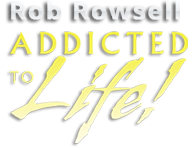Do you plan to invest your money in a new business or a rental property? If so, then you MUST fill out your due diligence checklist. This includes population demographics, surrounding businesses, competition, economic conditions, and more. Rob goes DEEP into the weeds in order to discuss all of the research factors you should consider. BEFORE you invest in any kind of business, you must watch this video!
 Auto Repair Shop Investing Due Diligence
Auto Repair Shop Investing Due Diligence
Rob began by listing off just a few potential businesses that one could invest in. Consider everything from coffee shops to apartment complexes to auto repair shops. All of them have one thing in common. Researching their demographics is key. An average investor may be interested in injecting capital into a business. In that case, they would be wise to do their homework.
Specifically, Rob then expanded on due diligence for aspiring auto repair shop owners. Perhaps you are investigating a vacant property. You wish to build a new repair shop on it. In that case, consider the size of its population. Next, take a look at how many existing automotive shops serve that community. Are you currently considering an underserved region? Or is the area already overserved? Rob calculates that one average sized auto repair shop can serve up to 1,000 households. Is your target city’s population approximately 20,000? Then it could theoretically sustain up to 13 successful shop locations in the area.
Researching Household Income
However, you are not just looking at how many people live near the businesses. You want to know what the average household income is. Aim to plant your business in the middle of a thriving community. That means its citizens average $70,000 or more in annual income. These folks are much more likely to prioritize maintaining their vehicles than other, less fortunate individuals. That may not be a fun statistic to quote, but it is true. We are all trying to make a profit. And we want to do it without fighting a constant uphill battle.
What about investing in existing auto service center franchises? That honest mistake ensures you will get a smaller cut of the pie. All the while, you will work harder in order to fit into someone else’s mold. Investing in a turn key, existing business can still benefit you. If you find this idea appealing, then seek out independently owned auto repair shops.
Due Diligence in Real Estate Investing
Moving on, we discuss the real estate industry. Rob discourages pursuing properties on apartment listing aggregate websites. Many of these sites set off a race to the bottom. When this happens, competition can get fierce. The properties listed on these sites often end up driving down prices. They do this by offering move in specials. Everyone needs a place to live. Discounts like these help a lot of lower income renters. However, you want to invest in higher end, multi-family properties. Those will not be surrounded by stiff competition. They will also give you much larger returns on your investments.
Next, let’s talk about your area’s demographics. Rob lays out an ideal situation. Let’s say the community population is 100,000 people. You will want there to be no less than one hospital nearby. What’s a tip many folks may not consider? Scout a property that is 30 minutes or less away from a major airport. Rob prefers an international one. Are you investing in rental properties in multiple large markets across the country? Then you will want them to be easily accessible to you. Let’s face it: you are busy, and you don’t need to spend your time driving all the way across town to assess an issue with your complex.
Investigating the Area’s Economy
Moreover, you must examine the economy in your chosen area. Job growth should consistently be trending upward. That figure should read a 4-5% minimum, year over year. You will also want a diverse selection of industries throughout the city. Many communities’ economies are based on only one industry. This could be, for instance, a car and truck manufacturing plant.
That factory, situated in the town’s industrial zone, may employ half the town. Thousands of small businesses have sprung up around it to serve its employees. How many times have we read headlines about those plants moving overseas, and ruining the area’s entire economy? Now, the plant workers, as well as the other businesses’ employees, are all out of work. If you invest in a shop serving these people, you and your staff are next.
Rob also mentioned the huge hit that the hospitality industry took during the COVID-19 pandemic. If an entire town’s economic hopes are pinned solely on a resort, then an event like that will sink it. Every town is a business, and just like with any successful business’ investment strategy, diversifying is key. Remember this when you’re doing your due diligence.
Join the ATL Inner Circle Financial Community
Do you currently own multi-family properties? If not, do you wish to invest in the future? Then you should consider joining our online discussion group, the Addicted To Life Community! Each month, you will join your fellow investors on a live Zoom roundtable talk. Rob Rowsell will teach you what you must do in order to build wealth in the lucrative real estate industry. It is not nearly as easy as it looks! Property taxes, liens, and legal fees can all be mind numbingly hard to navigate. Having a successful guide in your corner like Rob is a must! So sign up today!

